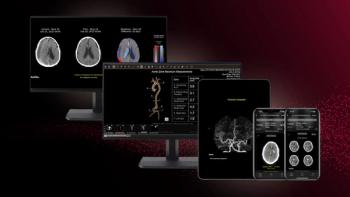
PET-CT Helps Diagnose Cardiac Sarcoidosis
Combined PET-CT can help diagnose cardiac sarcoidosis.
Combined FDG PET-CT can help uncover secondary sites of cardiac sarcoidosis (CS), according to a study published in the
Researchers from the University of Illinois in Chicago and the University of Texas MD Anderson Cancer Center in Houston performed a retrospective study to investigate the relationship between cardiac and extra-thoracic sarcoid findings on FDG PET-CT using a 72-hour pretest high-fat, high-protein, and very low-carbohydrate (HFHPVLC) diet.
"We wanted to know if patients being evaluated for cardiac sarcoidosis would benefit from more thorough imaging of the body beyond the usual torso scan, using this new technique," co-author Nadera Sweiss, MD, professor of rheumatology in the UIC College of Medicine, said in a release. Sweiss is also director of UI Health's Bernie Mac Sarcoidosis Translational Advanced Research (STAR) Center.
The study included data from 191 consecutive FDG PET-CT scans with 72-hour HFHPVLC diet preparation performed between December 2014 and December 2015 in known sarcoid patients. The researchers categorized cardiac and extra-thoracic sarcoid lesions and they were measured for radiotracer uptake.
The results showed that 188 patients had 191 eligible FDG PET/CT scans (Three follow-up scans):
• 20 (10%) of these scans were positive for CS
• 6 (3%) were indeterminate for CS
• 165 (86%) were negative for CS
Among the 20 scans positive for CS, eight (40%) had findings of both cardiac and extra-thoracic sarcoid.
"This study indicates that more extensive, full-body scans of patients with known cardiac sarcoidosis can uncover secondary sites of the disease in a significant number of patients," Sweiss said in the release. "Knowing there is disease in organs other than the heart changes the way we approach treatment--it allows us to more accurately stage the disease and treat it accordingly." The authors did caution, however, that further testing is required to determine the technique’s ability to detect CS.
Newsletter
Stay at the forefront of radiology with the Diagnostic Imaging newsletter, delivering the latest news, clinical insights, and imaging advancements for today’s radiologists.




























